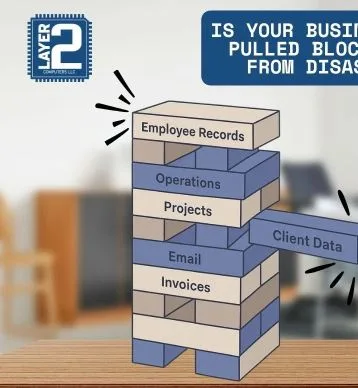Preserving Digital Records for the Future
In the digital age, the concept of preservation has expanded far beyond books, photographs, and physical documents. The vast majority of our professional, governmental, and personal information now exists online, often in dynamic formats that change by the second. From public statements made on social media to evolving webpages, digital records shape how history is written and how accountability is maintained. Yet as technology advances, so does the risk of losing these vital records to obsolescence, neglect, or alteration. Ensuring their preservation is not only a matter of convenience but of compliance, transparency, and truth.
The Growing Importance of Digital Preservation
Digital records have become the backbone of modern communication and decision-making. For government agencies, these records are public assets that reflect policy, communication, and civic engagement. For financial institutions, they are essential for meeting regulatory requirements and audit trails. For enterprises and legal teams, they serve as defensible evidence in litigation or compliance cases. Without proper preservation, valuable data can vanish—or worse, become unverifiable.
The challenge is that digital information is inherently fragile. Web content changes constantly, and social media posts can be deleted in seconds. Links break, platforms shut down, and file formats evolve. Even the hardware and software used to access these records can become obsolete over time. Without deliberate efforts to capture and preserve digital information in real-time, the historical and legal integrity of this data may be permanently lost.
Understanding What Digital Records Really Are
Digital records encompass far more than emails or PDFs. They include webpages, multimedia files, social media posts, chat conversations, and even cloud-based documents. Many of these records are interactive and constantly updated, making them different from traditional static documents. For instance, a government website that updates its content daily is an evolving record of public communication. Similarly, a company’s online statements, press releases, or customer interactions represent critical evidence of its operations and values at specific moments in time.
To preserve such records effectively, organizations must capture not just the content but also the surrounding metadata—the timestamps, source URLs, and contextual details that prove authenticity. This is where archiving software plays a pivotal role. It automates the capture and preservation process, ensuring that each version of a webpage or post is stored accurately, along with the data that certifies its origin and integrity.
Why Archiving Matters
Digital preservation is more than just storing data—it’s about maintaining trust. When a citizen submits a Freedom of Information request, or when a financial regulator reviews communications, they rely on records that are authentic, complete, and tamper-proof. If an organization cannot produce such records, it risks reputational damage, compliance violations, and even legal consequences.
For public agencies, digital transparency is an ethical obligation. Citizens expect to access accurate and complete information about government operations. For businesses, especially in regulated sectors like finance, maintaining accurate records is a matter of legal compliance. And for legal teams, digital archives can determine the outcome of a case—ensuring that the evidence presented in court reflects the truth as it existed at the time.
The responsibility, therefore, extends beyond compliance; it’s about accountability. Accurate recordkeeping allows organizations to prove what was said, done, or published, even years after the fact. It supports fair governance, responsible business conduct, and public confidence.
Challenges of Digital Record Preservation
While the importance of digital preservation is clear, achieving it consistently is complex. The volume of data being created every day is enormous. Organizations often operate across multiple platforms, each with different formats and policies. Social media channels, in particular, present unique difficulties because posts and comments can be edited or deleted in real time. Capturing such data manually is inefficient and error-prone.
Additionally, many organizations underestimate how quickly their systems and file formats can become outdated. A document saved in a format no longer supported by modern software may effectively be lost. Even secure servers can fail if data migration and validation are not managed properly.
Data authenticity is another major concern. A record without verifiable timestamps or integrity checks may not hold up in court or during an audit. A good web archiving software with the proper processes addresses this by storing content in immutable formats, complete with cryptographic hashes and detailed metadata that verify authenticity.
The Role of Automation in Preservation
Manual preservation methods are no longer sufficient. Automation ensures that content is captured consistently and accurately, regardless of when or where changes occur. Automated systems can archive websites and social media accounts continuously, capturing every update, deletion, and revision in real time.
This automation is particularly valuable for organizations that must comply with regulations requiring continuous recordkeeping. It eliminates the need for manual monitoring and reduces the risk of missing critical updates. Automation also simplifies retrieval. When a request for information arises, authorized users can quickly search archived records by date, keyword, or URL, reducing response times from days to minutes.
Moreover, automation ensures consistency. Every archived record is preserved with the same standards, ensuring that nothing is overlooked and that every piece of content can be verified later if needed.
Compliance and Legal Considerations
Regulatory bodies around the world have established strict requirements for how digital communications should be archived. In the United States, for example, agencies must comply with open records laws, while financial firms follow regulations set by the SEC and FINRA. These rules require that digital communications be preserved in formats that are immutable and easily retrievable.
Failure to comply can result in severe penalties, but compliance isn’t only about avoiding fines. It demonstrates organizational integrity and operational maturity. Proper archiving practices show that an entity values transparency, accountability, and governance.
In legal proceedings, the authenticity of digital evidence is paramount. Courts require proof that a record has not been altered. This is why the preservation process must include metadata and cryptographic verification methods such as hash values and timestamps. These elements form a clear chain of custody, allowing digital records to stand as credible, defensible evidence.
Building a Sustainable Digital Preservation Strategy
Preserving digital records is not a one-time task—it’s an ongoing commitment. A sustainable strategy should include several key components:
- Comprehensive coverage: Capture all relevant digital sources, including websites, social media, emails, and collaborative platforms.
- Automation: Implement tools that archive content continuously without manual intervention.
- Authenticity verification: Use cryptographic methods to ensure each record’s integrity and authenticity.
- Accessibility: Maintain an organized and searchable archive for fast retrieval during audits, legal reviews, or records requests.
- Longevity: Ensure that data formats and storage systems are updated over time to prevent obsolescence.
- Security: Protect archives with encryption and controlled access to maintain confidentiality.
Organizations should also develop clear policies outlining retention schedules, access permissions, and retrieval processes. These policies not only support compliance but also help streamline workflows and reduce the burden on teams tasked with managing vast amounts of information.
The Human Side of Digital Preservation
While technology drives the process, human oversight remains critical. Records managers, compliance officers, and legal professionals must understand what needs to be preserved and why. Technology cannot replace judgment—it simply provides the tools to execute decisions effectively.
Training staff on best practices and ensuring cross-departmental coordination are key to long-term success. Digital preservation should be treated as a shared responsibility that aligns IT infrastructure with legal and regulatory goals.
Furthermore, organizations should cultivate a culture that values transparency and accountability. When employees understand the importance of accurate recordkeeping, they are more likely to comply with archiving policies and avoid actions that could compromise data integrity.
Preparing for the Future
The digital landscape continues to evolve rapidly. New platforms emerge, technologies shift, and data grows exponentially. The future of digital preservation lies in adaptability—the ability to update strategies and tools as new communication channels and formats arise.
Emerging technologies like artificial intelligence may enhance the efficiency of preservation systems, enabling predictive monitoring and anomaly detection. However, regardless of technological evolution, the principles of authenticity, accessibility, and accountability will remain the foundation of recordkeeping.
By investing in reliable archiving systems today, organizations ensure they can meet tomorrow’s demands—whether those demands come from regulators, courts, or the public. Digital preservation is not merely a technical task; it’s a commitment to safeguarding truth in an age defined by information.
Conclusion
Preserving digital records is essential to protecting history, ensuring compliance, and maintaining public trust. The stakes are high: once digital content disappears or becomes unverifiable, it cannot be fully recovered. That’s why you should get reliable archiving software and robust web archiving practices that provide the structure needed to capture, preserve, and authenticate digital content for decades to come.
As more interactions move online, the value of digital preservation will only increase. Organizations that act now—by adopting automated, defensible, and transparent archiving strategies—will not only safeguard their data but also strengthen their credibility in a world that demands proof, precision, and permanence.




